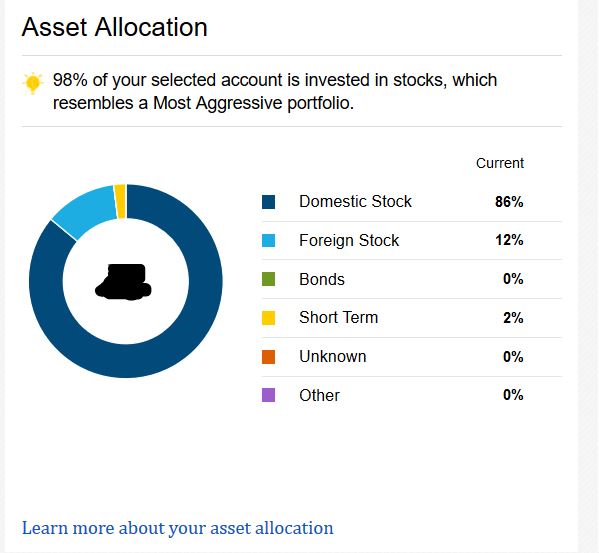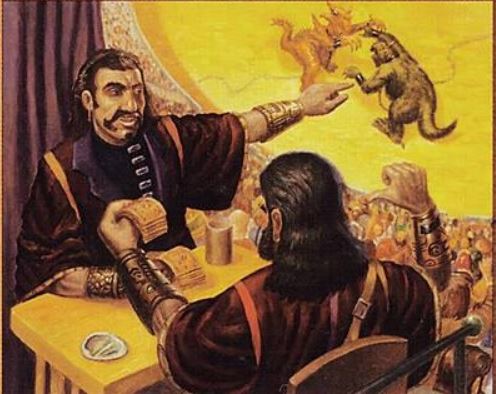Are you a Quiet Speculation member?
If not, now is a perfect time to join up! Our powerful tools, breaking-news analysis, and exclusive Discord channel will make sure you stay up to date and ahead of the curve.
Over the weekend I sat down to write my article and began pondering over the most interesting MTG finance news over the past week. We’ve had Rivals of Ixalan spoilers, but I’m not so interested in a set that will have little impact on Standard and won’t be showcased at a Pro Tour for a while (the next Pro Tour is Modern). We found out Masters 25 will be distributed to big box stores just like Iconic Masters, so we can do nothing but avoid potentially reprinted cards such as Rishadan Port.
Indeed the only really exciting trend I’ve noticed over the past week is the crazy surge in Old School prices. But you all knew these were great investments already, and hopefully you’ve been slowly acquiring cards you want for your collections. I don’t need to write about this topic yet again. Just know that price momentum is still positive and every single day I’m seeing buylist increases from Card Kingdom. These cards are truly low risk and high reward, and that’s my favorite type of investment!
Speaking of Risk
While I’m on the subject of risk, I wanted to touch upon this widely discussed but often misplaced topic in MTG finance. I decided to write a piece on risk after being called out again for the umpteenth time for being risk-averse/risk-intolerant. When people make these negatively charged remarks, they are doing so inappropriately and without context. I’ll explain.
There’s a well-written article on Investopedia that attempts to describe what investment risk truly is. The column summarizes itself by stating:
“There are no perfect definitions or measurements of risk, but inexperienced investors would do well to think of risk in terms of the odds that a given investment will fail to achieve the expected return, and the magnitude by which it will miss that target.”
Let’s think about that for a minute. When someone speculates on Magic cards—even Reserved List cards—they are doing so with an expectation of some return. If there’s a chance that return won’t be achieved, then there’s a risk associated with this investment.
The thing is, this “expected return” in the Magic world is a little nebulous. In the stock market, you can compare a given stock with the S&P 500 or other stocks within the same sector. But with Magic, it’s hard to compare what an Ali from Cairo’s risk is relative to a more traditional investment vehicle. Thus it’s hard to quantify “risk” in this space.
I would argue that betting on pieces of cardboard from a game, no matter which you buy, carries a relatively high amount of risk. Every time I park money in a Magic card, I am doing so because I believe that card will yield a greater return than a stock investment over a given time horizon.
This is a huge bet when you think about it! Is this cardboard more reliable than a company’s stock? Or a basket of companies? Certainly not. There is a greater chance that this cardboard game will go bust than it is that all 500 companies in the S&P 500 will. Thus I would argue any cardboard investment is “high-risk.”
You could argue that betting on Standard cards and reprintable stuff is higher risk even still, but you all know my stance on this matter. A nontraditional investment like cardboard is risky enough, as we just defined, so there’s no need to introduce even greater risk within the class that is Magic cards. Some may argue that taking greater risk within Magic could yield better returns, but I challenge you to find many newer cards with the same two-year return as this one:
Standard cards my pop temporarily, and there’s definitely an avenue worth pursuing to profit that way. But when it comes to longer-term investments, nothing can beat a solid, playable Reserved List card.
Taking a Step Back: Context
Now that I’ve established that any MTG investment can be deemed high-risk, I want to share an even broader context in defense of my investment strategies. Consider one’s total net worth and their relative allocation of this money. It may be in a home, in the stock market, retirement funds, artwork, watches, etc. All of these are viable methods to store value.
Where do you think Magic: The Gathering falls within this list when it comes to risk? Probably quite high in rank, right? A significant investment on game pieces controlled by a single company would likely be quite the high risk relative to other options.
Now let’s think about an individual and how they allocate their resources. First of all, they had better have their life in order before even thinking about investing in Magic cards. They better have all their basic necessities met, and I would always recommend a person looking to invest should first make sure they have health insurance. Why? Because one freak accident or genetically inherited disease can wipe you out if you lack health insurance. It’s a boring topic, but it’s absolutely most critical to have this in place before you start investing money.
Once you have necessities met and health insurance, you’re ready to invest incremental dollars. Where should you park this money? The smartest place to do this is a mutual fund or externally traded fund (ETF)—that is, a basket of stocks and bonds. Younger folks should lean more heavily into stocks because they can afford to take more risk (there’s that word again) while people closer to retirement age should consider a safer portfolio.
Personally, this is where I consider the majority of my risk exposure. I park most of my resources in individual stocks and baskets of stocks. I hold virtually zero bonds in my portfolio because I view that asset class as in a bubble thanks to the low-interest-rate environment the fed has given us. Would this be considered a high-risk portfolio? You better believe it! Every time I log into my Fidelity account I’m reminded of this.

Does this look like the portfolio allocation of a risk-intolerant individual? Not according to Fidelity! Risk is always relative to an expectation or another investment vehicle, and as far as stocks go I am one of the most aggressive I know.
Adding Even More Context
Now let’s consider even more life context. Would there be a different level of risk if someone had a spouse who stayed home to watch multiple kids? That person's income is the sole source of financial support for their family. Naturally this means their retirement contributions are the only ones the family has to depend on. What if that person also had other relatives that depended on this person's income? This would apply even greater financial pressure on the household.
Should that person lose their job or something for any reason, this would create quite the financial hardship on their family. Considering this reality, one may recommend this person should allocate resources in a conservative way. But if they instead continued to allocate aggressively to stocks, would they not be taking on a larger amount of risk? If we fell into another huge recession and this person lost their job, their retirement account would shrink drastically and the sole source of income in their household would disappear simultaneously.
Yet some people decide to take on this level of risk because they see the returns being achieved in the stock market and they want to participate in these gains. It doesn't matter if they're buying high beta stocks or blue chips—the risk is certainly elevated for this person and they need to acknowledge that.
Reflecting upon my own situation, it is readily apparent that people who judge me for my risk tolerance are doing so based on a single action, within a single investment position, within a single asset class, within the context of my life. All they see is, “Sig sold a Battle Screech he must be risk-averse. Or, “Sig doesn’t invest in cryptocurrency because he can’t handle the risk.” These are shallow statements made without any full appreciation for what risk truly is and how it fits within the context of one’s life.
Wrapping It Up
I recognize I spent some time this week on my soap box. I’m okay with that. It gave me an opportunity to share more context around my investment strategy and life situation, while also offering a topic to discuss outside of “Buy Old School Cards.” Risk is a very complicated subject, and if someone thinks they can judge another’s risk profile based on a tiny subset of investment decisions, they are possibly making too many poor assumptions.
If my entire life was Magic finance, would I be considered risk-averse? Possibly. But with such great returns from Reserved List cards, why do I need to expose myself to potential reprints? It’s not like foil Commander cards are growing much more quickly relative to some of these Arabian Nights cards. The returns are no more attractive, so I’d prefer the sure thing. I’d argue people investing in Commander foils and non-Reserved List cards for any timeline beyond a couple months are taking unnecessary risk.
And speaking of these older cards, have you seen some of the movement lately? Buylists are going insane! If you are investing in these classic cards, you should have absolutely no concern with liquidity. Card Kingdom and ABU Games are giving you all the opportunity to cash out that you need. Juzám Djinn buylist of $840! Elephant Graveyard at $100. Old Man of the Sea at $140. Erhnam Djinn at $175! The list is endless and the prices keep climbing.
If investing in these cards with such monotonically increasing values and little downside makes me risk-averse, then so be it. I’m making money for my family and that’s all that matters.
…
Sigbits
- Ali from Cairo is completely sold out at Star City Games (along with many other Arabian Nights cards), with a price tag of $300. Think about it. A year ago I remember buying a nice condition copy for around $60. With returns like this, do you really need to take on greater risk?
- Arabian Nights Serendib Efreet is also completely gone from Star City Games. This one has a $350 price point. Card Kingdom’s buy price is $210 and they currently only have one EX copy in stock. Based on how I’ve studied their pricing algorithms, I predict they will jack up that buy price nicely once someone acquires that lingering copy. With store credit, their price ($275) is actually not that bad!
- I have also been watching Legends cards rise steadily. For example, Angus Mackenzie is the most expensive multi-colored creature from the set and Star City Games is sold out at $129.99. That price is far too low considering copies on TCGplayer are in the same price range or even higher for near mint. These will all continue to rise in price as well.





